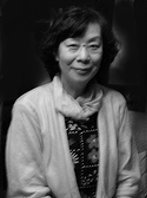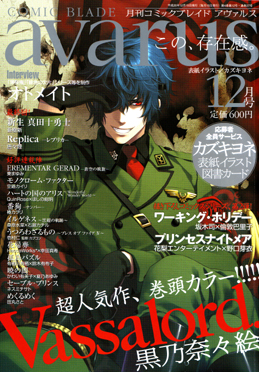Related Research Articles

Named after Osamu Tezuka, the Tezuka Osamu Cultural Prize is a yearly manga prize awarded to manga artists or their works that follow the Osamu Tezuka manga approach founded and sponsored by Asahi Shimbun. The prize has been awarded since 1997, in Tokyo, Japan.
Miho Obana is a shōjo manga artist born in Tokyo, Japan. Her best-known work was Kodomo no Omocha, also known as Kodocha, which was published in Ribon magazine, and won the Kodansha Manga Award for shōjo in 1998. Other works include Partner, Andante and Honey Bitter.

Arina Tanemura is a Japanese manga artist, illustrator, and character designer. She made her professional manga debut in 1996 with the one-shot The Style of the Second Love in the shōjo manga magazine Ribon Original and later published her first series, I.O.N, in 1997, in the main Ribon magazine. She gained mainstream popularity from the late 1990s to mid-2000s with her series Phantom Thief Jeanne, Full Moon o Sagashite, and The Gentlemen's Alliance Cross.

Moto Hagio is a Japanese manga artist. Regarded for her contributions to shōjo manga, Hagio is considered the most significant artist in the demographic and among the most influential manga artists of all time, being referred to as the "god of shōjo manga" by critics.
Keiko Takemiya is a Japanese manga artist, professor and university administrator. As part of the Year 24 Group, she was a leading figure in shōjo manga scene in the 1970s creating such manga as Kaze to Ki no Uta, Toward the Terra, Natsu e no Tobira. Additionally she became head of the Faculty of Manga at Kyoto Seika University, and then later became the president of the university.

The Year 24 Group is a grouping of female manga artists who heavily influenced shōjo manga beginning in the 1970s. While shōjo manga of the 1950s and 1960s largely consisted of simple stories marketed towards elementary school-aged girls, works by members of the group significantly developed shōjo manga by expanding it to incorporate new genres, themes, and subject material. Narratives and art styles in shōjo manga became more complex, and works came to examine topics such as psychology, gender, politics, and sexuality. Manga produced by the Year 24 Group brought the shōjo category into what scholars have described as its "golden age".
Akimi Yoshida is a Japanese manga artist.
Fumi Yoshinaga is a Japanese manga artist known for her shōjo and boys' love works.
Kyoko Mizuki is one of the pen names of Keiko Nagita, a Japanese writer who is best known for being the author of the manga and anime series Candy Candy.

Monthly Comic Avarus is a Japanese shōjo manga magazine published by Mag Garden.
Kazumi Yamashita is a Japanese manga artist.
Toshie Kihara is a Japanese manga artist and a member of the Year 24 Group. She made her professional debut in 1969 with the short story Kotchi Muite Mama! in Bessatsu Margaret. She is best known for her manga series Mari to Shingo, serialized from 1977 to 1984 in LaLa, which follows a romance between two young men at the start of the Shōwa era. Several of her manga series have inspired musicals performed by the all-female Takarazuka Revue, including Angélique, an adaptation of the novels by Anne Golon; Torikaebaya Ibun, an adaptation of the Heian era tale Torikaebaya Monogatari; and Ōeyama Kaden.

Wata no Kunihoshi is a Japanese manga series written and illustrated by Yumiko Ōshima. It was serialized by Hakusensha in LaLa magazine from 1978 to 1987 and collected in seven tankōbon volumes. The story is about an abandoned kitten called Chibi-neko who is adopted by a young man named Tokio who grows up believing that she is human.
Keiko Suenobu is a female Japanese shōjo manga artist from Kitakyūshū, Fukuoka. She graduated from the School of Art and Design at the University of Tsukuba with a major in sculpture. In 2006, Suenobu's manga series, Life won the Kodansha Manga Award for best shōjo manga. Life and her manga series Limit were adapted for broadcast as live-action television drama series. Bullying is a recurring theme in her stories.

Hebi Onna, published in English under the title Reptilia, is a Japanese horror manga trilogy written and illustrated by Kazuo Umezu. It is composed of three series – Scared of Mama, The Spotted Girl, and Reptilia – which were originally serialized in the shōjo manga magazine Shūkan Shōjo Friend from 1965 to 1966. The individual series were not originally conceived as an ongoing story but were later revised to form a connected trilogy, which was published as a single volume by Shogakukan in 1986. An English-language translation of the trilogy was published by IDW Publishing in 2007.
Gū-Gū Datte Neko de Aru (グーグーだって猫である) is a Japanese manga series written and illustrated by Yumiko Ōshima. It was adapted into a live action film in 2008. It was further adapted into a Japanese television drama broadcast by WOWOW. Season 1 of the drama aired in the fall of 2014 and Season 2 aired in the summer of 2016.

Comic Girls is a Japanese four-panel manga series written and illustrated by Kaori Hanzawa. It made its first appearance in Houbunsha's Manga Time Kirara Max magazine with the May 2014 issue. An anime television series adaptation produced by Nexus aired in Japan between April and June 2018.

Neko to Watashi no Kinyōbi is a Japanese manga written and illustrated by Arina Tanemura. Neko to Watashi no Kinyōbi was serialized in the monthly shōjo manga magazine Margaret from 2013 to 2015.
Otomechikku or otome-chikku is a subgenre of shōjo manga that emerged in the 1970s. Stories in the subgenre focus on the lives and exploits of protagonists who are ordinary Japanese teenage girls, a narrative style that emerged in response to the ascendance of exotic, glamorous, and internationally focused shōjo manga throughout the decade. Otomechikku is most commonly associated with manga published in the magazine Ribon, and is noted by critics for its influence on the aesthetic of kawaii.

I Got Married to the Girl I Hate Most in Class is a Japanese romantic comedy light novel series written by Seiju Amano and illustrated by Nanami Narumi. Originally launched as a YouTube manga on the Manga Angel Neko Oka channel in March 2020, Media Factory have published nine volumes since December 2020 under their MF Bunko J imprint. A manga adaptation with art by Mosskonbu has been serialized online via Kadokawa Shoten's Shōnen Ace Plus website since May 2021 and has been collected in six tankōbon volumes. An anime television series adaptation produced by Studio Gokumi and AXsiZ is set to premiere in January 2025.
References
- ↑ Thorn, Rachel (2005). "A History of Manga". Animerica: Anime & Manga Monthly. 4 (2, 4, & 6). Archived from the original on April 15, 2013. Retrieved January 2, 2008.
- ↑ Thorn, Rachel (2001). "Shôjo Manga—Something for the Girls". The Japan Quarterly. 48 (3). Archived from the original on March 3, 2016. Retrieved January 2, 2008.
- ↑ "Ohsima Yumiko sakuhin list". www2t.biglobe.ne.jp. Retrieved November 7, 2022.
- ↑ "Yumiko Oshima". lambiek.net. Retrieved November 7, 2022.
- ↑ Masanao Amano, Julius Wiedemann (2004). Manga Design. Taschen. pp. 1979–1982. ISBN 978-3-8228-2591-4.
- 1 2 Takahashi, Mizuki (2008). "Opening the Closed World of Shojo Manga". In MacWilliams, Mark W. (ed.). Japanese visual culture : explorations in the world of manga and anime. Mark Wheeler Macwilliams. Armonk, N.Y.: M.E. Sharpe. p. 134. ISBN 978-0-7656-2235-8. OCLC 503447257.
- ↑ Joel Hahn. "Kodansha Manga Awards". Comic Book Awards Almanac. Archived from the original on August 16, 2007. Retrieved August 21, 2007.
- ↑ "12th Tezuka Osamu Cultural Prize Winners Announced". Anime News Network. May 11, 2008. Retrieved August 21, 2008.
- ↑ "長嶋茂雄さんら9人文化勲章 功労者に加山雄三さんら". Jiji.com. Archived from the original on October 26, 2021. Retrieved October 26, 2021.
- ↑ Jaqueline Berndt (1995). Phänomen Manga : Comic-Kulture in Japan (in German). Berlin: Edition q. p. 111. ISBN 3-86124-289-3.
- 1 2 International perspectives on shojo and shojo manga : the influence of girl culture. Masami Toku. New York. 2015. pp. 138, 215. ISBN 978-1-317-61075-5. OCLC 910847745.
{{cite book}}: CS1 maint: location missing publisher (link) CS1 maint: others (link) - ↑ Schodt, Frederik L. (2011). Dreamland Japan : writings on modern manga. Berkeley, California. p. 292. ISBN 978-1-933330-95-2. OCLC 731210677.
{{cite book}}: CS1 maint: location missing publisher (link)